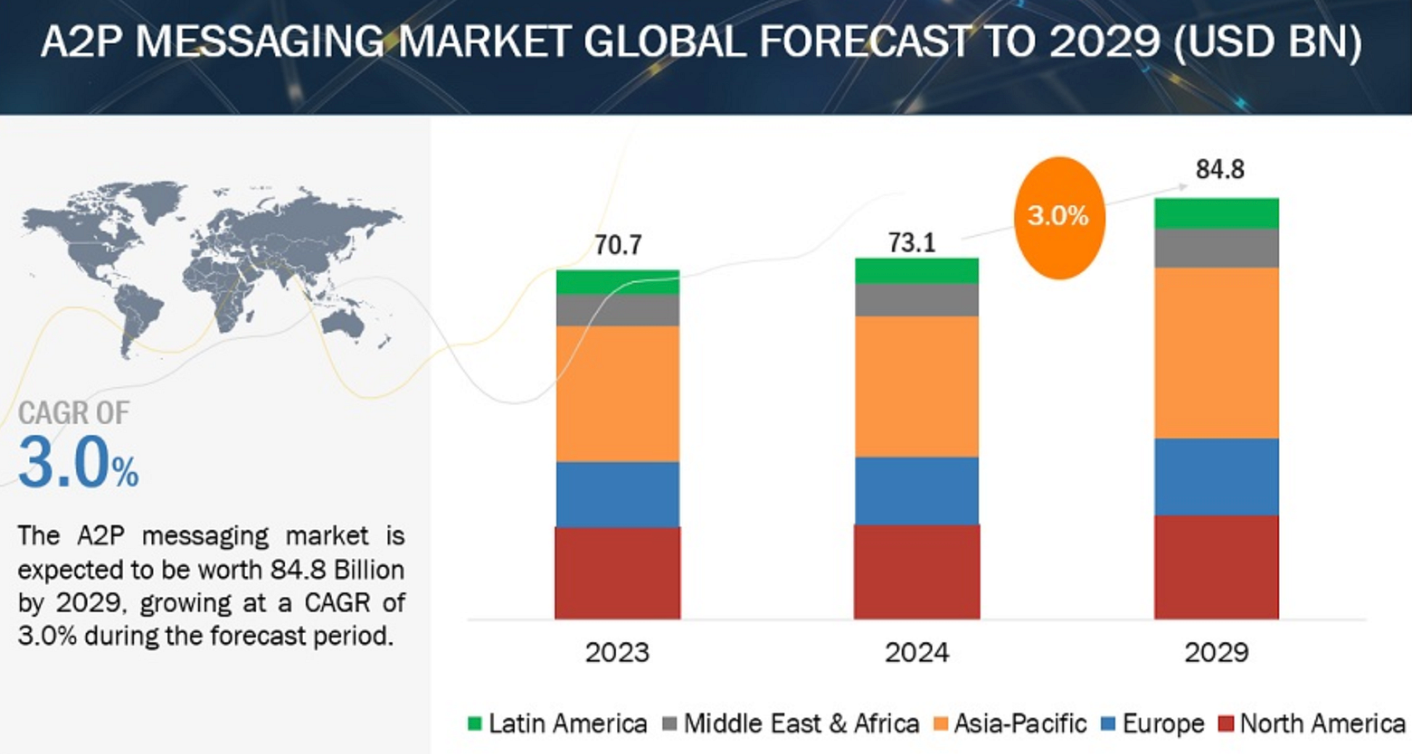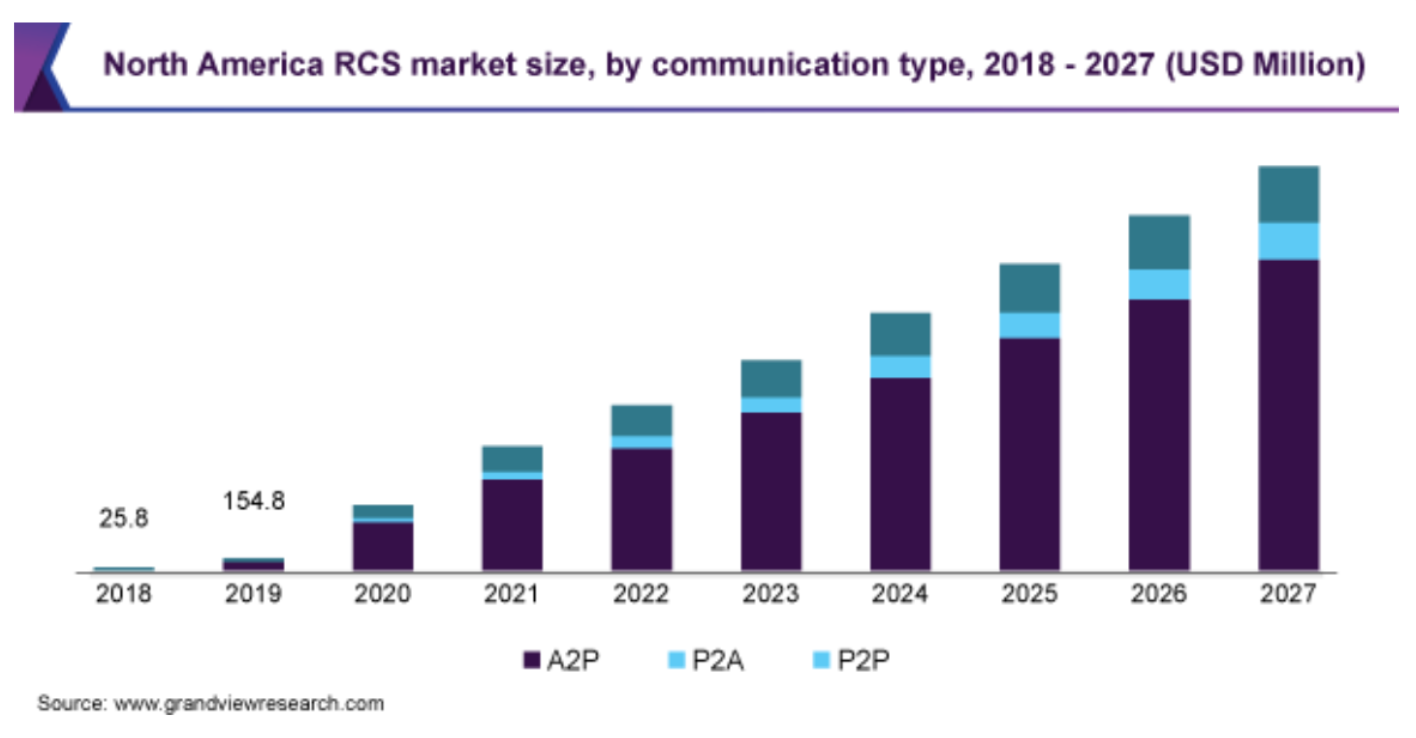Over time, humans have developed numerous ways to communicate, but technology has dramatically impacted how we interact. Communication technology has evolved significantly over the past few decades, starting with the invention of the telegraph and the telephone, which laid the foundation for long-distance communication. The rise of mobile technology further transformed communication. SMS, introduced in the early 1990s, became one of the most popular means of communication, offering a simple and efficient way to send short text messages between mobile phones. With the advent of smartphones, people could access the internet, make calls, send SMS, and use instant messaging apps from almost anywhere in the world.
However, communication is no longer limited to humans interacting with each other. Increasingly, machines communicate with humans through notifications, reminders, and alerts, all of which are essential for business communication. This emerging trend is known as application-to-person (AtoP) communication. In this article, we will explore AtoP communication (SMS and RCS) and examine how the internet is transforming its operations. We will delve into the AtoP ecosystem, business evolutions, current trends, and the role of database technologies in keeping these communications up and running.
What is A2P and RCS?
A2P (application-to-person) communication is the process by which automated systems or applications send messages to individuals, playing a vital role in modern business and customer interaction. Unlike traditional person-to-person messaging, A2P is used for delivering high-volume, purposeful content such as marketing promotions, customer service notifications, security alerts, and transactional updates. It leverages various channels, including SMS, email, push notifications, and messaging apps, to provide timely and relevant information to users. As technology advances, A2P has become essential for enhancing customer engagement and service efficiency, driven by the widespread adoption of mobile technology and robust database management systems.
With the evolution of mobile technologies, it has become convenient for businesses to communicate about day to day businesses, promotions, purchase notifications to their customers using SMS and RCS, lets understand about them in brief.
SMS A2P (Application-to-Person) involves automated SMS messages sent from applications to individuals. It is commonly used for sending alerts and notifications, such as transaction updates, appointment reminders, and security codes for two-factor authentication. SMS is also a popular channel for promotional messages, delivering marketing campaigns, discounts, and special offers directly to users’ phones. Its simplicity and high deliverability make it a widely used tool for business communication.
RCS (Rich Communication Services) is an advanced form of SMS that supports rich media content, including images, videos, and interactive elements. RCS enhances customer engagement by allowing businesses to send more engaging and visually appealing messages. It also supports two-way communication, enabling users to interact with messages through options like replies, bookings, or purchases. RCS provides a more interactive and branded messaging experience compared to traditional SMS, making it a valuable tool for modern business communications.
Market trends for SMS for business
According to marketsandmarkets.com, SMS for business is projected to grow by 10 Billion dollars by 2029, (https://www.marketsandmarkets.com/Market-Reports/a2p-messaging-market-44.html) with a growth rate of 3.0 % during the forecast period.

According to the website, the A2P messaging market is experiencing significant growth, driven by its widespread adoption across customer-centric industries like retail, e-commerce, BFSI, healthcare, and media. The rise in smartphone penetration has made A2P messaging a crucial tool for businesses to engage with their customers effectively. Particularly in mobile banking, A2P messaging plays a central role in sending alerts, transaction details, and OTP verifications, contributing to market growth.
However, the market faces challenges from stringent regulatory frameworks, such as GDPR and TCPA, which require businesses to adhere to strict data protection and privacy standards. Despite these challenges, the increasing reliance on mobile applications presents a substantial opportunity for A2P messaging providers. As mobile apps become essential for real-time communication, A2P messaging is positioned to enhance customer engagement and streamline transactional processes, driving market expansion, especially in emerging markets.
Challenge for SMS and MMS
With the evolution of internet-based applications, Over-The-Top (OTT) messaging apps like WhatsApp, Telegram, and Facebook Messenger have transformed the way businesses interact with users. These platforms offer several advantages over traditional SMS, such as allowing more characters per message, richer media content, and interactive features that enable users to take actions directly within the app without needing to open separate business applications. This level of interoperability, combined with enhanced visual appeal and a more engaging user experience, has significantly improved how businesses communicate with their customers.
As a result, the market is increasingly looking for Rich Communication Services (RCS) solutions, which offer many of the same benefits as OTT apps but are integrated directly into the messaging systems of Android phones. RCS supports features like high-resolution images, videos, read receipts, and interactive buttons within messages, providing a more dynamic and interactive user experience compared to traditional SMS.
However, while RCS is widely available on Android devices, it has not yet been fully adopted by Apple for iPhones. This creates a gap in the market, as businesses and users on the iOS platform do not currently have access to RCS’s advanced features. The absence of RCS on iPhones means that businesses still need to rely on traditional SMS or third-party OTT apps to reach iOS users, potentially limiting the consistency and richness of the communication experience across different devices.
As the demand for richer, more interactive communication solutions grows, there is significant pressure on the industry to develop and adopt platforms that can offer these features universally across all mobile devices, including iPhones. This would enable businesses to provide a seamless and engaging communication experience to all users, regardless of their device or operating system.
Market trends for RCS
According to grandviewsearch , The global Rich Communication Services (RCS) market, valued at USD 780.1 million in 2019, is projected to grow at a significant CAGR of 35.4% from 2020 to 2027, driven by the increasing adoption of advanced messaging protocols that enhance traditional mobile messaging. RCS offers features like group chats, media sharing, and video calls, which are expected to eventually replace SMS and MMS. The growth is further supported by the rise in smartphone usage and carrier companies rolling out RCS as software updates. Enterprises are increasingly adopting RCS for Application-to-Person (A2P) messaging due to its high Click Through Rate (CTR) and large reach, providing a compelling alternative to existing messaging platforms.

According to a report, iPhones hold a dominant market share in the U.S. with approximately 57–60%, compared to 40–43% for Android devices. This strong market presence positions Apple to significantly impact the RCS market if it announces support for RCS in iOS 18, potentially boosting RCS adoption over traditional SMS.
How MongoDB can empower text for business applications
Combining MongoDB with RCS empowers businesses to harness the full potential of advanced messaging. MongoDB’s scalable data storage, real-time processing, and robust analytics complement the rich, interactive features of RCS, enabling businesses to deliver engaging and personalised communication experiences. This integration not only enhances customer engagement and satisfaction but also provides valuable insights to optimise messaging strategies and drive business success.
High availability
MongoDB Atlas deploys clusters with a minimum of three nodes to ensure high availability and fault tolerance. In this setup, if the primary node, which handles both reads and writes, goes down, one of the secondary nodes automatically takes over as the new primary. This secondary node assumes the responsibility of handling all read and write operations until the former primary node is restored and stabilised. Once the original primary node comes back online and is stable, it reverts to being a secondary node, resuming its role in handling read operations.
Highly scalable application
WiredTiger, MongoDB’s default storage engine, significantly enhances application scalability through several key features. It provides efficient data storage with document-level locking and compression, ensuring high concurrency and reduced storage footprint. WiredTiger’s write-ahead logging ensures data durability and recovery, while its in-memory caching and adaptive cache sizing optimise read performance. The engine’s support for Multi-Version Concurrency Control (MVCC) and B+ tree indexing facilitates high throughput and efficient data management. Additionally, WiredTiger integrates with MongoDB’s sharding and replication mechanisms, enabling horizontal scaling and high availability to handle growing data volumes and traffic effectively.
Aggregation pipeline
The MongoDB Aggregation Pipeline is a powerful framework that allows for advanced data processing and analysis directly within the database. When applied to applications utilizing rich communication services (RCS), the aggregation pipeline can significantly enhance the management, analysis, and utilization of communication data. Here’s how the aggregation pipeline can help in the context of RCS-based business applications:
Complex data transformation and analysis:
Aggregation stages: The aggregation pipeline supports various stages such as $match, $group, $sort, $project, and $lookup, enabling businesses to perform complex data transformations and analyses. For instance, you can aggregate RCS message interactions to determine engagement metrics or user sentiment by grouping messages, sorting by timestamps, and projecting key data fields.
Real-time insights: By using the aggregation pipeline, businesses can generate real-time insights from RCS messaging data. For example, you can create dashboards that show live statistics on message delivery rates, response times, and user interactions, helping you make data-driven decisions quickly.
Search
MongoDB Atlas Search is a fully integrated search engine within MongoDB Atlas that provides advanced full-text search capabilities. When applied to RCS-based business applications, Atlas Search can significantly enhance the handling, analysis, and utilisation of communication data. Here’s how Atlas Search can be beneficial:
Full-text search: Atlas Search enables full-text search across RCS message content, allowing businesses to perform detailed searches on message bodies, user interactions, and metadata. This capability is crucial for finding specific messages, extracting relevant information, or analysing user feedback.
Rich query features: Atlas Search supports complex queries including phrase matching, partial matches, and fuzzy searches. Businesses can leverage these features to refine their search for messages or user interactions, improving the precision of data retrieval.
MEAN/MERN application framework
The MEAN and MERN stacks offer robust frameworks for developing RCS-based business applications, leveraging MongoDB for scalable data storage and real-time capabilities provided by Node.js. Angular (MEAN) and React (MERN) enhance user interfaces with dynamic and interactive features, improving engagement and user experience. Express.js in both stacks simplifies API management, ensuring smooth integration between frontend and backend. Together, these technologies enable businesses to build high-performance, scalable, and user-friendly RCS applications that drive effective communication and engagement.
Conclusion
As we have understood in this blog about the evolution of human communication, from early technologies like the telegraph to modern mobile messaging, Application-to-Person (A2P) communication is now central to business interactions. While SMS remains popular for its simplicity and high deliverability, Rich Communication Services (RCS) offers a more engaging alternative with rich media and interactive features. The A2P market is growing, driven by mobile technology and the need for effective customer engagement, though RCS’s adoption is limited on iOS. MongoDB enhances RCS applications with scalable storage, real-time processing, and advanced analytics through Atlas, WiredTiger, and the Aggregation Pipeline. MEAN and MERN stacks further improve RCS applications with dynamic user interfaces and efficient backend support. Together, these technologies enable businesses to build robust, interactive communication solutions.
Next Steps
Visit our solutions page to learn more about how MongoDB can help power communication solutions.
Ready to learn more about MongoDB? Head over to the Atlas Learning Hub to start building your MongoDB skills.